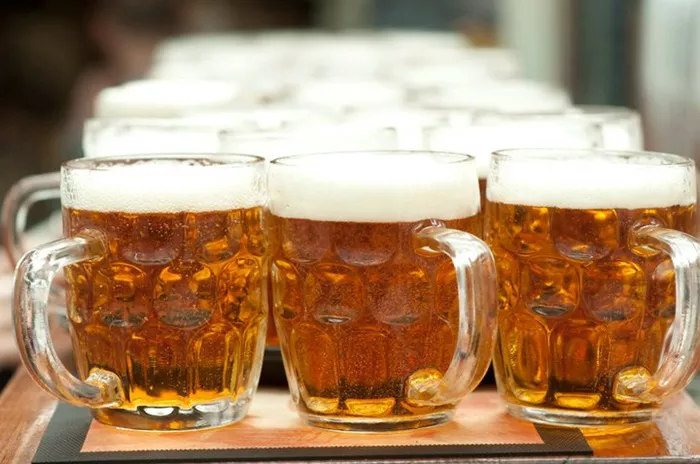Vancouver’s craft beer scene has blossomed over the years, with dozens of breweries now calling the city home, placing it alongside renowned beer destinations like Portland and San Francisco. However, what’s less commonly known is that Vancouver’s brewing history dates back to the city’s very beginnings. A new book by Noëlle Phillips aims to shine a light on this rich history and bring to the forefront stories that have long been overlooked.
Phillips, an English professor at Douglas College, has written and co-edited academic books on topics ranging from craft beer marketing to medieval beer history. Brewmasters & Brewery Creek: A History of Craft Beer in Vancouver, Then and Now is her first foray into writing for a general audience.
The book takes its name from Brewery Creek, a waterway that once flowed through the Mount Pleasant neighborhood, which was the heart of Vancouver’s first brewing industry. The creek ran along what is now Main Street before flowing into False Creek, but it was filled in during the early 20th century to make way for railway development.
In the first half of Brewmasters & Brewery Creek, Phillips traces Vancouver’s independent brewing scene from the 1880s to the 1920s.
“I wanted to tell the story in a way that was engaging and revealed some hidden aspects of Vancouver’s brewing history, focusing on stories of breweries and brewmasters that have been largely forgotten,” Phillips explained.
During this early period, Vancouver was primarily a lager town, reflecting the German heritage of many early settlers. One key figure in Vancouver’s brewing history was Charles Doering, a German immigrant who arrived in North America at the age of 19. Doering’s Vancouver Brewing Company, established in 1888, would become one of the largest on the Pacific Coast. His success laid the foundation for the local beer culture and helped many other German and English immigrants feel at home in their new country.
“It was really him that said, ‘Hey, I can make Vancouver feel like home for other German immigrants.’ He was the one who kickstarted the industry,” Phillips said. “It’s about immigrants not just importing beer but creating something familiar in a new land.”
Doering’s brewery would eventually become part of BC Breweries, which later merged with Carling O’Keefe and was eventually acquired by Molson Coors. As Phillips writes, “All roads lead to Big Beer,” reflecting the consolidation that would dominate the industry in the 20th century.
The book also delves into the challenges that shaped Vancouver’s early brewing scene. Prohibition in British Columbia from 1917 to 1921, combined with tax hikes and corporate mergers, dealt a blow to independent breweries. This period marked the end of the city’s early brewing heyday and the beginning of a new era dominated by large, corporate breweries.
Phillips argues that these changes paved the way for the rise of corporate beer in Canada, and by the 1980s, the era of independent breweries in Vancouver was effectively over.
“The prohibition period didn’t last long, but it was a turning point that helped corporate breweries gain a foothold, making it almost impossible for independent brewers to thrive,” Phillips said. “From 1912 to 1982, we saw the disappearance of that independent culture.”
The revival of craft beer in Vancouver, Phillips contends, began in the summer of 1978, following a union lockout at the city’s major breweries that left B.C. without beer for several months. The lockout, which stemmed from workers’ demands for better working conditions, hurt the reputation of Canadian beers and led to a renewed interest in local brews.
In the wake of the lockout, two key figures—John Mitchell and Frank Appleton—became pivotal in reigniting the craft beer scene. Appleton’s 1978 article “The Underground Brewmaster” in Harrowsmith magazine inspired Mitchell and others to explore the possibility of on-site brewing, which eventually led to the opening of the Troller Pub in Horseshoe Bay in 1982, the first legal brewery in Canada since prohibition.
Key legislative changes, such as the 2000 decision allowing brewpubs to sell beer off-site and the 2013 law permitting tasting rooms, further fueled the craft beer revolution. Since then, the industry has exploded, with a surge in new breweries across the province.
However, Phillips warns that the rapid growth may not be sustainable in the long term.
“We’ve seen amazing growth since 2013, but I do believe there will be a natural retraction,” she said. “That said, the move toward more traditional styles and slow, sustainable growth is a positive trend.”
Looking to the future, Phillips is optimistic about the craft beer industry’s direction, despite recent challenges. “It’s not just about the new, weird versions of IPAs anymore,” she said. “I think we’ll see more focus on traditional brewing methods, which will be healthier for the industry in the long run.”
Ultimately, Phillips hopes her book fosters a greater appreciation for Vancouver’s brewing history and the people behind the craft beer movement.
“The industry used to be seen as a lot of beards and plaid shirts,” Phillips said. “But it’s evolving into something more inclusive and diverse. There’s still work to do, but I want to make sure that the people who’ve helped shape the industry are visible. Without them, we wouldn’t have what we have today.”
You Might Be Interested In:


